Jingyi Yang
Sid
Shall Your Data Strategy Work? Perform a Swift Study
Feb 19, 2025Abstract:This work presents a swift method to assess the efficacy of particular types of instruction-tuning data, utilizing just a handful of probe examples and eliminating the need for model retraining. This method employs the idea of gradient-based data influence estimation, analyzing the gradient projections of probe examples from the chosen strategy onto evaluation examples to assess its advantages. Building upon this method, we conducted three swift studies to investigate the potential of Chain-of-thought (CoT) data, query clarification data, and response evaluation data in enhancing model generalization. Subsequently, we embarked on a validation study to corroborate the findings of these swift studies. In this validation study, we developed training datasets tailored to each studied strategy and compared model performance with and without the use of these datasets. The results of the validation study aligned with the findings of the swift studies, validating the efficacy of our proposed method.
Kronecker Mask and Interpretive Prompts are Language-Action Video Learners
Feb 05, 2025Abstract:Contrastive language-image pretraining (CLIP) has significantly advanced image-based vision learning. A pressing topic subsequently arises: how can we effectively adapt CLIP to the video domain? Recent studies have focused on adjusting either the textual or visual branch of CLIP for action recognition. However, we argue that adaptations of both branches are crucial. In this paper, we propose \textbf{CLAVER}: a \textbf{C}ontrastive \textbf{L}anguage-\textbf{A}ction \textbf{V}ideo Learn\textbf{er}, designed to shift CLIP's focus from the alignment of static visual objects and concrete nouns to the alignment of dynamic action behaviors and abstract verbs. Specifically, we introduce a novel Kronecker mask attention for temporal modeling. Our tailored Kronecker mask offers three benefits 1) it expands the temporal receptive field for each token, 2) it serves as an effective spatiotemporal heterogeneity inductive bias, mitigating the issue of spatiotemporal homogenization, and 3) it can be seamlessly plugged into transformer-based models. Regarding the textual branch, we leverage large language models to generate diverse, sentence-level and semantically rich interpretive prompts of actions, which shift the model's focus towards the verb comprehension. Extensive experiments on various benchmarks and learning scenarios demonstrate the superiority and generality of our approach. The code will be available soon.
STGCN-LSTM for Olympic Medal Prediction: Dynamic Power Modeling and Causal Policy Optimization
Jan 29, 2025Abstract:This paper proposes a novel hybrid model, STGCN-LSTM, to forecast Olympic medal distributions by integrating the spatio-temporal relationships among countries and the long-term dependencies of national performance. The Spatial-Temporal Graph Convolution Network (STGCN) captures geographic and interactive factors-such as coaching exchange and socio-economic links-while the Long Short-Term Memory (LSTM) module models historical trends in medal counts, economic data, and demographics. To address zero-inflated outputs (i.e., the disparity between countries that consistently yield wins and those never having won medals), a Zero-Inflated Compound Poisson (ZICP) framework is incorporated to separate random zeros from structural zeros, providing a clearer view of potential breakthrough performances. Validation includes historical backtracking, policy shock simulations, and causal inference checks, confirming the robustness of the proposed method. Results shed light on the influence of coaching mobility, event specialization, and strategic investment on medal forecasts, offering a data-driven foundation for optimizing sports policies and resource allocation in diverse Olympic contexts.
Context Parallelism for Scalable Million-Token Inference
Nov 04, 2024



Abstract:We present context parallelism for long-context large language model inference, which achieves near-linear scaling for long-context prefill latency with up to 128 H100 GPUs across 16 nodes. Particularly, our method achieves 1M context prefill with Llama3 405B model in 77s (93% parallelization efficiency, 63% FLOPS utilization) and 128K context prefill in 3.8s. We develop two lossless exact ring attention variants: pass-KV and pass-Q to cover a wide range of use cases with the state-of-the-art performance: full prefill, persistent KV prefill and decode. Benchmarks on H100 GPU hosts inter-connected with RDMA and TCP both show similar scalability for long-context prefill, demonstrating that our method scales well using common commercial data center with medium-to-low inter-host bandwidth.
FedPAE: Peer-Adaptive Ensemble Learning for Asynchronous and Model-Heterogeneous Federated Learning
Oct 17, 2024Abstract:Federated learning (FL) enables multiple clients with distributed data sources to collaboratively train a shared model without compromising data privacy. However, existing FL paradigms face challenges due to heterogeneity in client data distributions and system capabilities. Personalized federated learning (pFL) has been proposed to mitigate these problems, but often requires a shared model architecture and a central entity for parameter aggregation, resulting in scalability and communication issues. More recently, model-heterogeneous FL has gained attention due to its ability to support diverse client models, but existing methods are limited by their dependence on a centralized framework, synchronized training, and publicly available datasets. To address these limitations, we introduce Federated Peer-Adaptive Ensemble Learning (FedPAE), a fully decentralized pFL algorithm that supports model heterogeneity and asynchronous learning. Our approach utilizes a peer-to-peer model sharing mechanism and ensemble selection to achieve a more refined balance between local and global information. Experimental results show that FedPAE outperforms existing state-of-the-art pFL algorithms, effectively managing diverse client capabilities and demonstrating robustness against statistical heterogeneity.
G$^2$V$^2$former: Graph Guided Video Vision Transformer for Face Anti-Spoofing
Aug 14, 2024



Abstract:In videos containing spoofed faces, we may uncover the spoofing evidence based on either photometric or dynamic abnormality, even a combination of both. Prevailing face anti-spoofing (FAS) approaches generally concentrate on the single-frame scenario, however, purely photometric-driven methods overlook the dynamic spoofing clues that may be exposed over time. This may lead FAS systems to conclude incorrect judgments, especially in cases where it is easily distinguishable in terms of dynamics but challenging to discern in terms of photometrics. To this end, we propose the Graph Guided Video Vision Transformer (G$^2$V$^2$former), which combines faces with facial landmarks for photometric and dynamic feature fusion. We factorize the attention into space and time, and fuse them via a spatiotemporal block. Specifically, we design a novel temporal attention called Kronecker temporal attention, which has a wider receptive field, and is beneficial for capturing dynamic information. Moreover, we leverage the low-semantic motion of facial landmarks to guide the high-semantic change of facial expressions based on the motivation that regions containing landmarks may reveal more dynamic clues. Extensive experiments on nine benchmark datasets demonstrate that our method achieves superior performance under various scenarios. The codes will be released soon.
The Llama 3 Herd of Models
Jul 31, 2024Abstract:Modern artificial intelligence (AI) systems are powered by foundation models. This paper presents a new set of foundation models, called Llama 3. It is a herd of language models that natively support multilinguality, coding, reasoning, and tool usage. Our largest model is a dense Transformer with 405B parameters and a context window of up to 128K tokens. This paper presents an extensive empirical evaluation of Llama 3. We find that Llama 3 delivers comparable quality to leading language models such as GPT-4 on a plethora of tasks. We publicly release Llama 3, including pre-trained and post-trained versions of the 405B parameter language model and our Llama Guard 3 model for input and output safety. The paper also presents the results of experiments in which we integrate image, video, and speech capabilities into Llama 3 via a compositional approach. We observe this approach performs competitively with the state-of-the-art on image, video, and speech recognition tasks. The resulting models are not yet being broadly released as they are still under development.
Generalized Face Anti-spoofing via Finer Domain Partition and Disentangling Liveness-irrelevant Factors
Jul 11, 2024



Abstract:Face anti-spoofing techniques based on domain generalization have recently been studied widely. Adversarial learning and meta-learning techniques have been adopted to learn domain-invariant representations. However, prior approaches often consider the dataset gap as the primary factor behind domain shifts. This perspective is not fine-grained enough to reflect the intrinsic gap among the data accurately. In our work, we redefine domains based on identities rather than datasets, aiming to disentangle liveness and identity attributes. We emphasize ignoring the adverse effect of identity shift, focusing on learning identity-invariant liveness representations through orthogonalizing liveness and identity features. To cope with style shifts, we propose Style Cross module to expand the stylistic diversity and Channel-wise Style Attention module to weaken the sensitivity to style shifts, aiming to learn robust liveness representations. Furthermore, acknowledging the asymmetry between live and spoof samples, we introduce a novel contrastive loss, Asymmetric Augmented Instance Contrast. Extensive experiments on four public datasets demonstrate that our method achieves state-of-the-art performance under cross-dataset and limited source dataset scenarios. Additionally, our method has good scalability when expanding diversity of identities. The codes will be released soon.
Cardinality Estimation in DBMS: A Comprehensive Benchmark Evaluation
Sep 15, 2021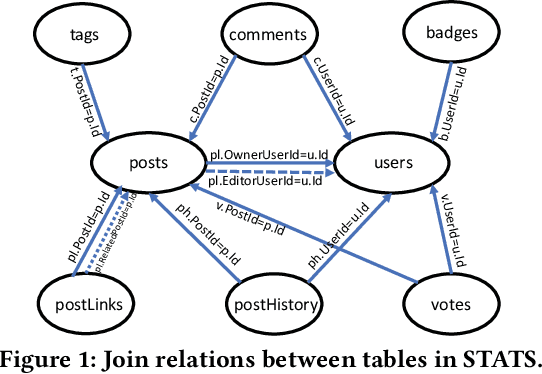
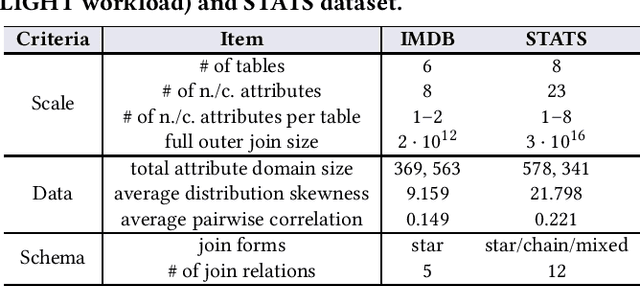
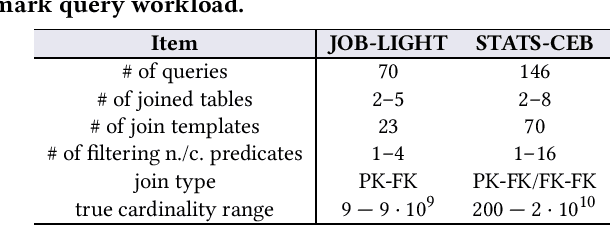
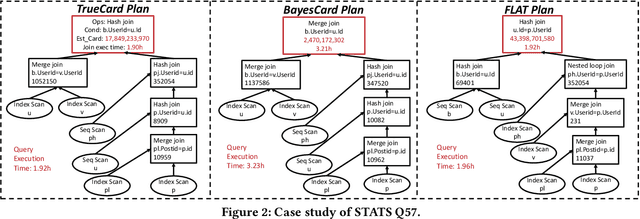
Abstract:Cardinality estimation (CardEst) plays a significant role in generating high-quality query plans for a query optimizer in DBMS. In the last decade, an increasing number of advanced CardEst methods (especially ML-based) have been proposed with outstanding estimation accuracy and inference latency. However, there exists no study that systematically evaluates the quality of these methods and answer the fundamental problem: to what extent can these methods improve the performance of query optimizer in real-world settings, which is the ultimate goal of a CardEst method. In this paper, we comprehensively and systematically compare the effectiveness of CardEst methods in a real DBMS. We establish a new benchmark for CardEst, which contains a new complex real-world dataset STATS and a diverse query workload STATS-CEB. We integrate multiple most representative CardEst methods into an open-source database system PostgreSQL, and comprehensively evaluate their true effectiveness in improving query plan quality, and other important aspects affecting their applicability, ranging from inference latency, model size, and training time, to update efficiency and accuracy. We obtain a number of key findings for the CardEst methods, under different data and query settings. Furthermore, we find that the widely used estimation accuracy metric(Q-Error) cannot distinguish the importance of different sub-plan queries during query optimization and thus cannot truly reflect the query plan quality generated by CardEst methods. Therefore, we propose a new metric P-Error to evaluate the performance of CardEst methods, which overcomes the limitation of Q-Error and is able to reflect the overall end-to-end performance of CardEst methods. We have made all of the benchmark data and evaluation code publicly available at https://github.com/Nathaniel-Han/End-to-End-CardEst-Benchmark.
Partially Interpretable Estimators (PIE): Black-Box-Refined Interpretable Machine Learning
May 06, 2021
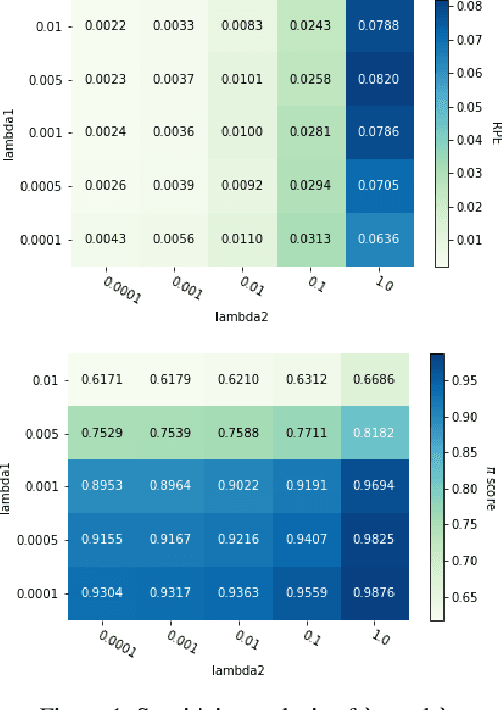
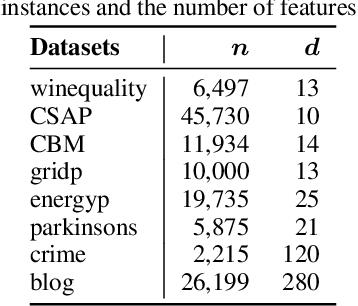
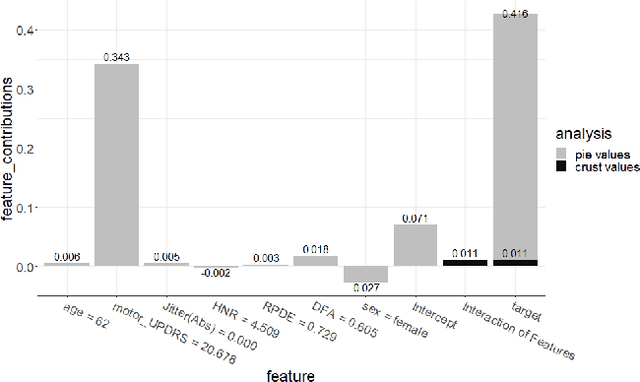
Abstract:We propose Partially Interpretable Estimators (PIE) which attribute a prediction to individual features via an interpretable model, while a (possibly) small part of the PIE prediction is attributed to the interaction of features via a black-box model, with the goal to boost the predictive performance while maintaining interpretability. As such, the interpretable model captures the main contributions of features, and the black-box model attempts to complement the interpretable piece by capturing the "nuances" of feature interactions as a refinement. We design an iterative training algorithm to jointly train the two types of models. Experimental results show that PIE is highly competitive to black-box models while outperforming interpretable baselines. In addition, the understandability of PIE is comparable to simple linear models as validated via a human evaluation.
 Add to Chrome
Add to Chrome Add to Firefox
Add to Firefox Add to Edge
Add to Edge